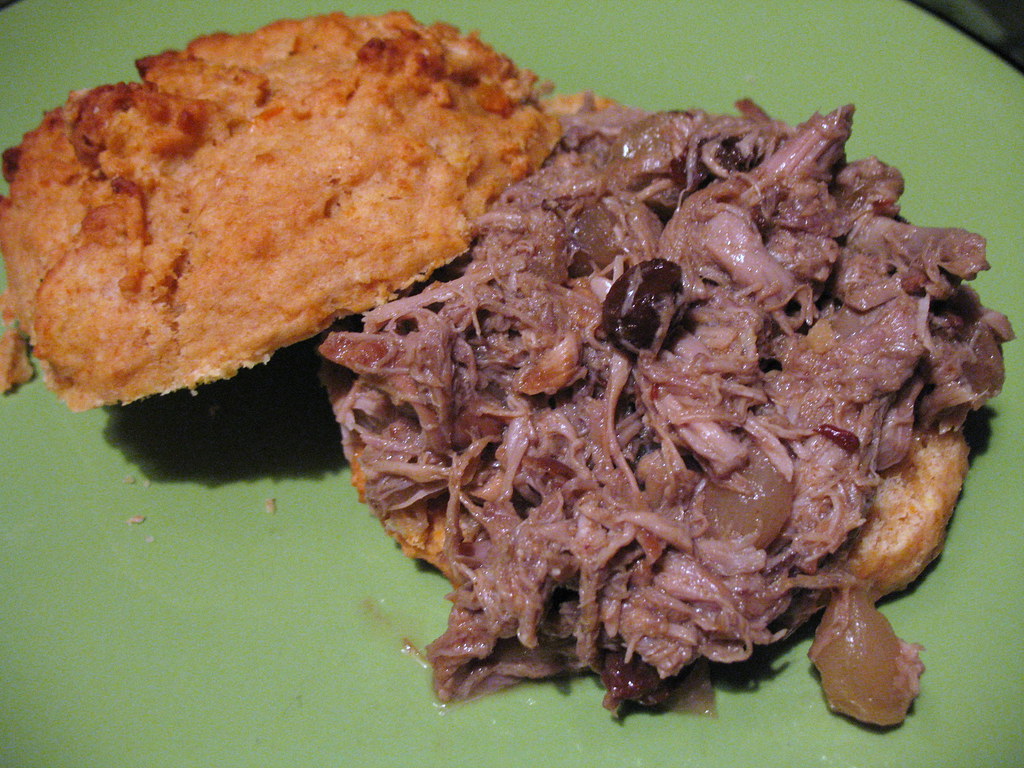
Did someone say “Christmas goose”? It seems to be echoing in the minds of many this time of year. But as Tom eloquently warns, it’s not always the home cook’s best call (listen to this guy – he’s a butcher). My mom will not let my dad forget the Christmas when he, spurred by Dickensian nostalgia, tried to cook a whole goose. I was very young then, but remember the epic disaster: rivers of fat, long delayed dinner time, and the taste not being worth a dime in anyone’s estimation. So why this precautionary tale about goose when the strange bird in this recipe evidently is not? Well, a small part of me would like to right the wrongs of the past, and cook a goose. But first, it’ll be helpful to get better acquainted with its diminutive cousin, duck. So here’s my second stab at cooking the quacker.
According to the guests this dish was served to, it was the best use of the “not-so-strange” birds from D’Artagnan. So I saved the recipe for the finale of this series of posts. It’s not much to look at, I’ll admit. I tried to butter up the plate appeal by adding some small pearl onions to the braise and exposing the juicy stewed raisins for the shoot, but photographing the finished dish was my biggest challenge, thanks to being in someone else’s home who was gracious about pouring the wine. To my luck, someone else brought homemade sweet potato biscuits to the party, and these not only elevated the meat from a sodden pile on a plate but were delicious to eat with as a sort of sandwich.
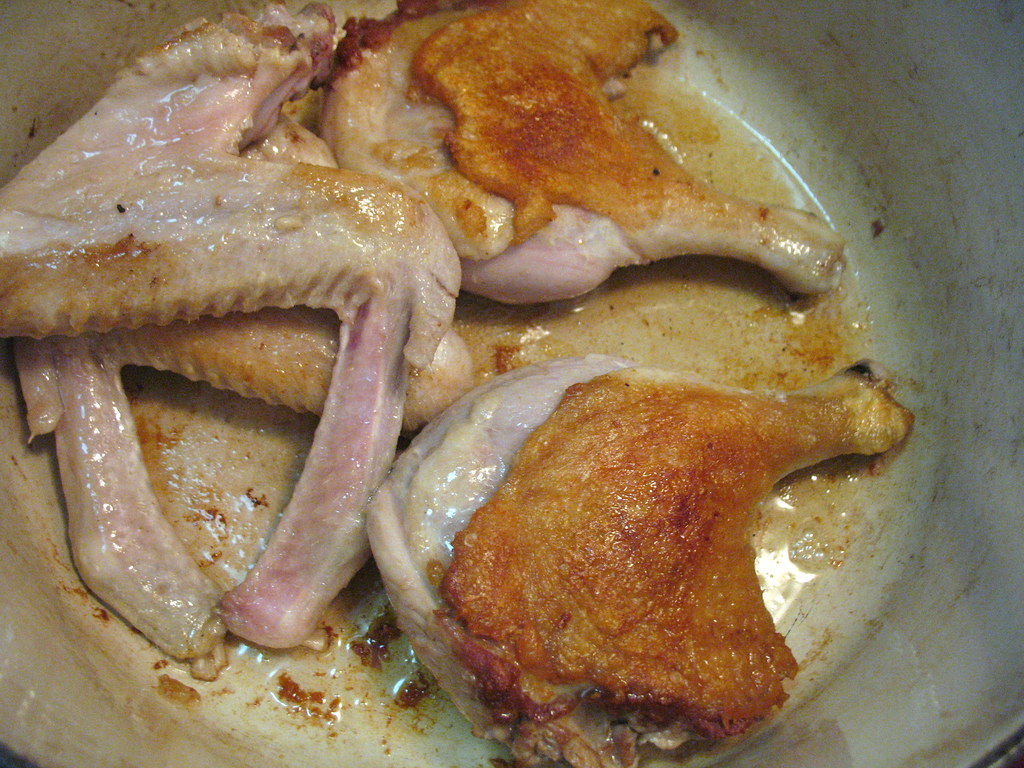
I began by browning the legs on both sides with their skin. The duck I was working with was a whole Pekin duck, which meant that it had wings and everything but the head (the butchered carcass was also not a pretty picture). I decided to toss in the wings and eventually shred what meat could be salvaged from them.
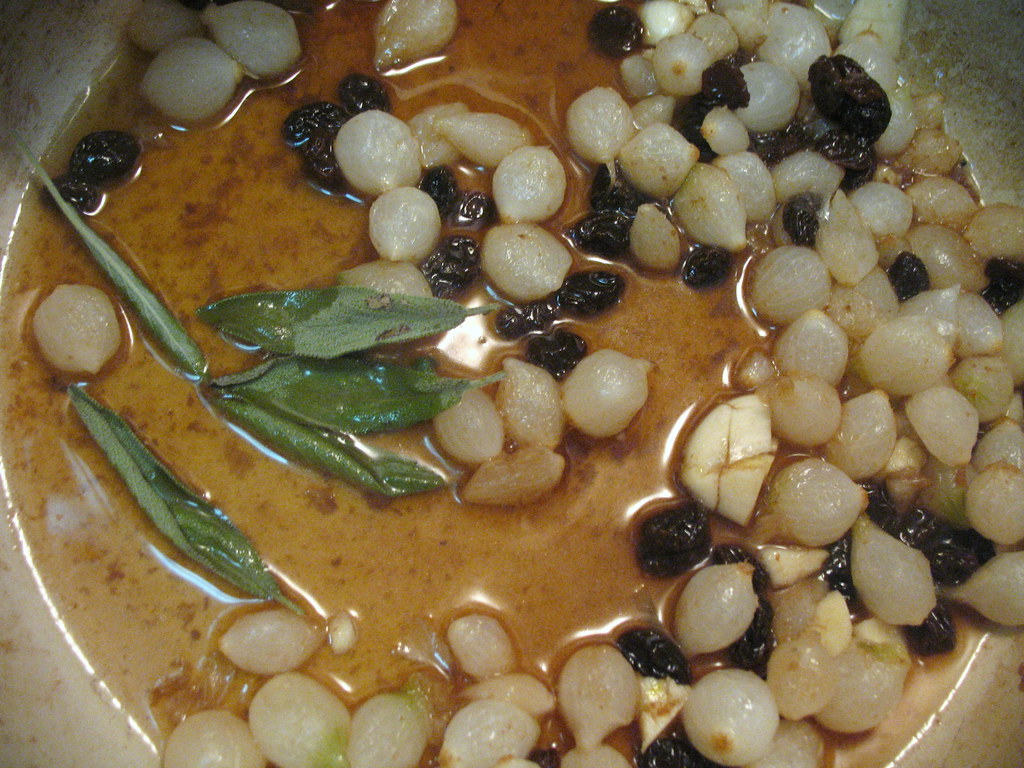
The duck’s dark leg meat is game for many flavors to enhance its natural funk. I went with a sweet, fruity twist by drowning it in apple cider and leaving it to braise a few hours. But first, I added pearl onions, raisins, garlic and sage to the same pot used for browning and deglazed it with some sweet sherry wine.
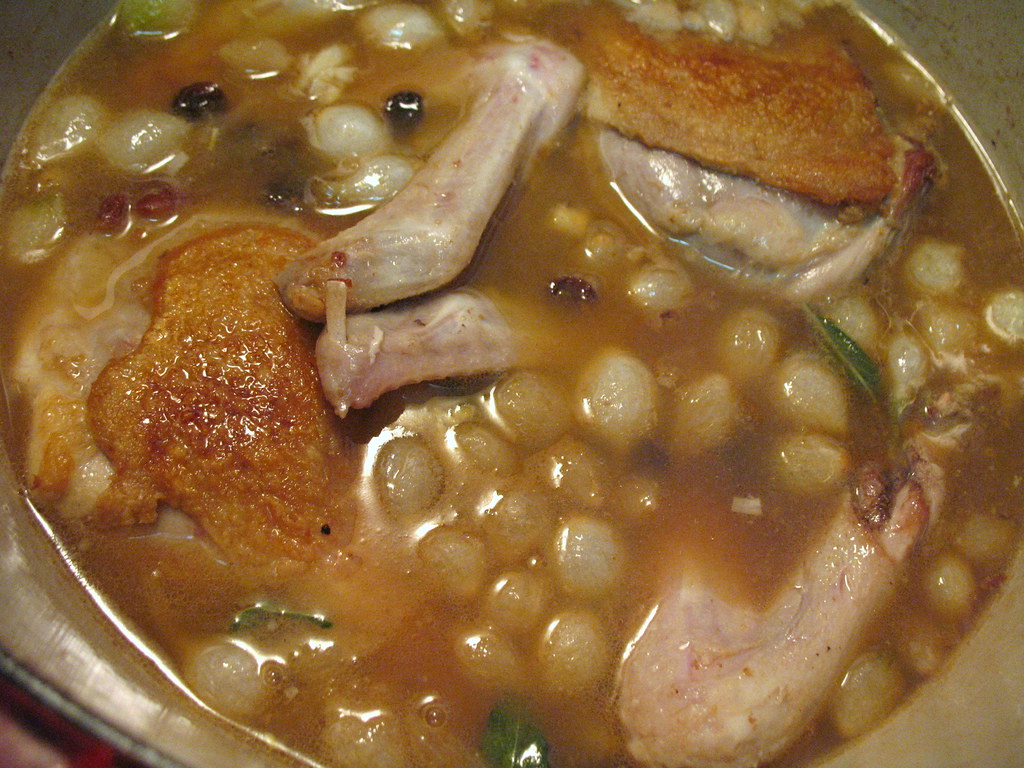
Apple cider is a seasonal treat that perfumes a home with its distinct, Christmasy scent when warmed. (I’ve seldom walked into a holiday party that was without a big pot of mulling cider on the stove.) I was able to enjoy this same effect while the duck legs braised for an afternoon, even though the smell was mingled with meat. I’m not complaining.
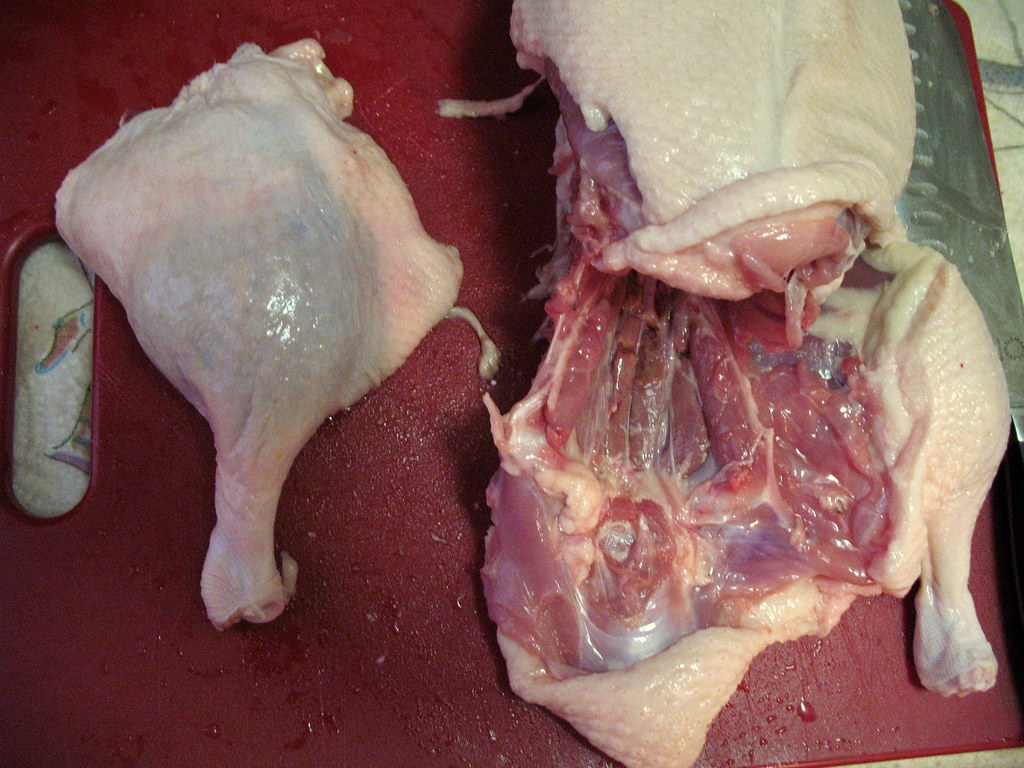 one down, one duck leg to go
one down, one duck leg to go
It might sound like a time-consuming task, but pulling the duck meat off the bones is almost negligible when it’s been braised for as long as this. The bones and skin pretty much separated themselves on their own. Anyone who’s cooked chicken soup with a whole bird is in for a treat: leg meat falls away especially easily and its texture improves over longer cooking rather than becoming sort of tough like those pieces of chicken stuck to the back bone.
Finally, to name the dish… I had originally intended to call it a confit, but I’m now thoroughly confused by this food term. “Confit” stems from the French word for “preserved” and traditionally that preservation method is cooking the food in fat. But I’ve seen plenty of “duck confit” recipes that aren’t poached in fat. I’ve seen the word used with various vegetables and even potatoes. I generally came to think of it as referring to anything finely chopped or shredded and seasoned with some type of sauce. But a particular purist scoffed when I suggested this dish was “confit,” and I’d like to err on the side of caution. Any thoughts on how or why the word became so broad, I gladly welcome.
Apple Cider-Braised Duck Legs with Raisins and Pearl Onions
(makes about 3-4 servings)
2 duck legs
3 cups apple cider (or enough to cover)
1/2 cup sherry wine (or substitute dry white wine)
1/3 cup raisins
3/4 cup peeled pearl onions, fresh or frozen and thawed
2 cloves garlic, chopped
3-4 sage leaves
1 tablespoons vegetable oil
salt and pepper to taste
Pat the duck legs dry and season its skin with salt and pepper. In a large, heavy-bottomed pot or Dutch oven, heat the oil over medium-high heat. Once it begins to pop, place the duck legs and cook for 2-3 minutes on each side, until golden-brown. Remove the duck legs and set aside.
Preheat the oven to 350 degrees. Add the onions, garlic, raisins, sage and sherry or wine to the pot. Cook over medium heat, stirring and scraping the bits stuck to the bottom of the pan until the liquid is reduced by one-half. Return the duck legs to the pot, and fill to cover with apple cider. Bring to a boil, then remove from heat. Braise, covered, in the oven for 2-3 hours.
Let cool once removed from the oven enough to handle. Scoop out the duck legs and place in a colander set over the pot while you separate the bones and skin and toss out excess pieces of fat from the meat. Scoop out the raisins and onions; discard the sage leaves. Combine the raisins, onions and duck meat and set aside. Heat the pot of braising liquid on the stove over medium-high and reduce, stirring occasionally, until reduced to about one-half. Season with salt and pepper to taste. If it looks like you still have too much liquid to blend with the shredded meat mixture, reduce it more. Stir in the duck meat mixture thoroughly to re-warm. Serve with biscuits (optional).
Cost Calculator
(for 4 servings)
2 duck legs (from a whole Pekin duck at $26.99): $11.00
3 cups apple cider: $0.50
1/2 cup sherry: $0.75
1/3 cup raisins: $0.30
3/4 cup pearl onions: $0.50
4 sage leaves: $0.25
salt, pepper, 2 cloves garlic, 1 Tb oil: $0.20
Total: $13.50
Health Factor![]()
![]()
![]()
![]()
![]()
![]()
Six brownie points: It might not be as fatty as being cooked in fat, but duck, especially the dark meat, is just fatty. (The brownie point scale might break if and when I get around to cooking the bigger, fatter mother goose.) It helps to rid some excess skin at the carving stage, and keep big pieces of fat at bay when you separate the meat from the bones. But moderation is the best way to keep this succulent dish healthy.
Green Factor![]()
![]()
![]()
![]()
![]()
![]()
![]()
Seven maple leaves: This is the same duck that gave its flesh for the curry duck breast recipe. So all the same things about D’Artagnan’s sustainable and humane poultry practices hold true here. I added an extra brownie point for making sure that each part of the bird was used in some way — the wings, the bones to make stock with, and I still have the duck’s liver sealed away in my freezer for a later (perhaps pâte-like) use.
4 Responses
Susan Lerner
Well, this may be just the thing to combine with Mark Bittman’s “ducketta” for duck breasts in the 12/24 NY Times. As to dissin’ the goose – I admit I haven’t made one in a long time. But the last time I did, I followed a Craig Claiborne recipe for Goose Stuffed with Apples and Prunes – apparently a Scandanavian favorite – and it was, frankly, if I do say so myself, superb. My father-in-law still talks about it with great admiration several decades after the event itself. Now, I’m thinking about making both duck and goose over this holiday season. Ah, the clogged arteries to come!
Johnnie Walker black Label Scotch Whisky
Johnnie Walker black Label Scotch Whisky…
[…]Not-So-Strange Birds Part V: Apple Cider-Braised Duck Legs with Raisins and Pearl Onions » Not Eating Out in New York[…]…
stranger thinhs gif generator for photoshop
…Check out this Stranger Things Upside Down .GIF generator
[…] What host are you using? Can I am getting your associate link on your host? I would like to host my designsoho.com site with pro image tools for photographers on a fast one like this […]
4th of july flyer template
Posters for Independence Day
[…] Download link http://bit.ly/1JjDoRa – 4th of July Flyer design template – This is one of our most popular creative posters – the Independence Day Poster – also known as “military appreciation poster template“. And this time it’s more versatile th…